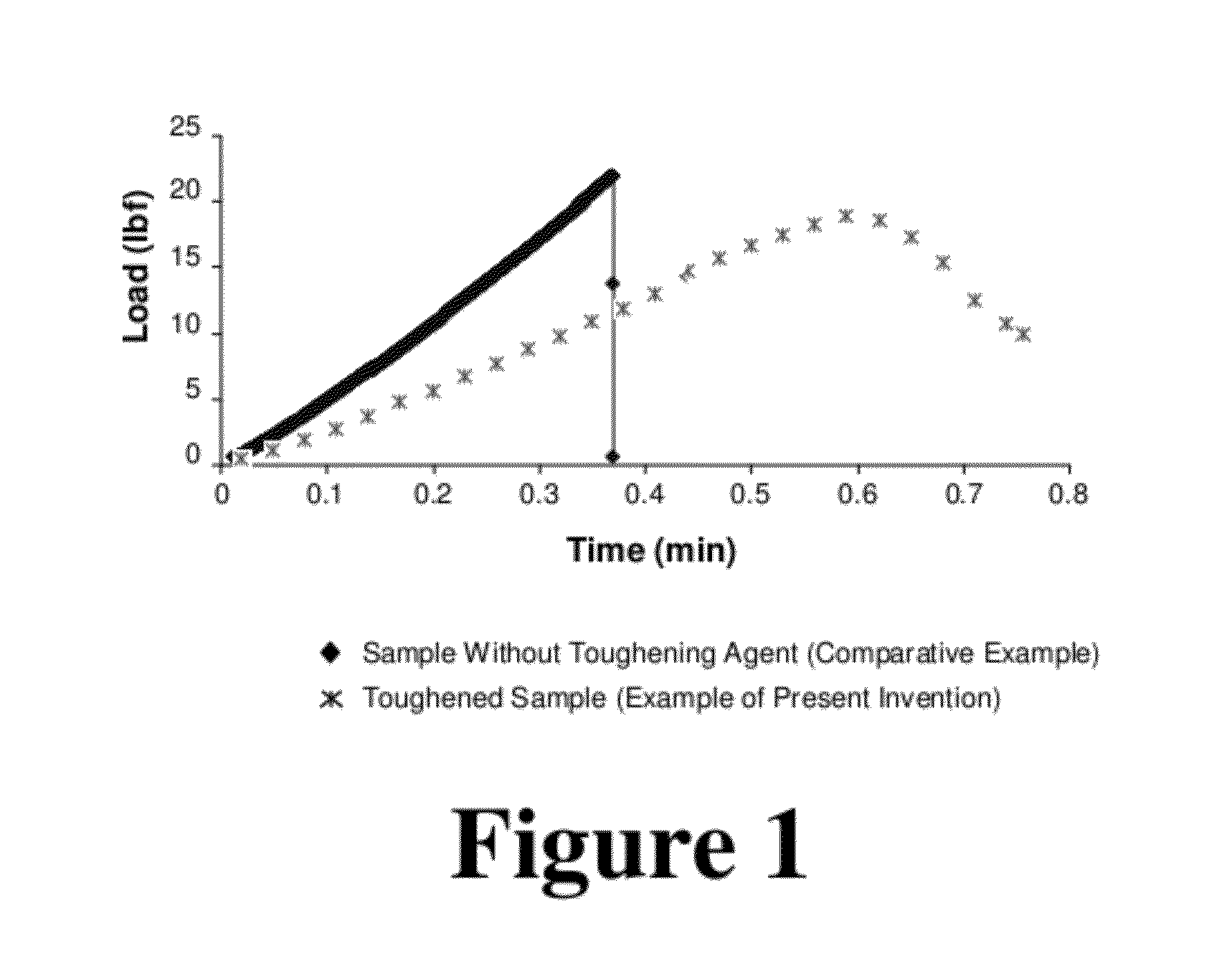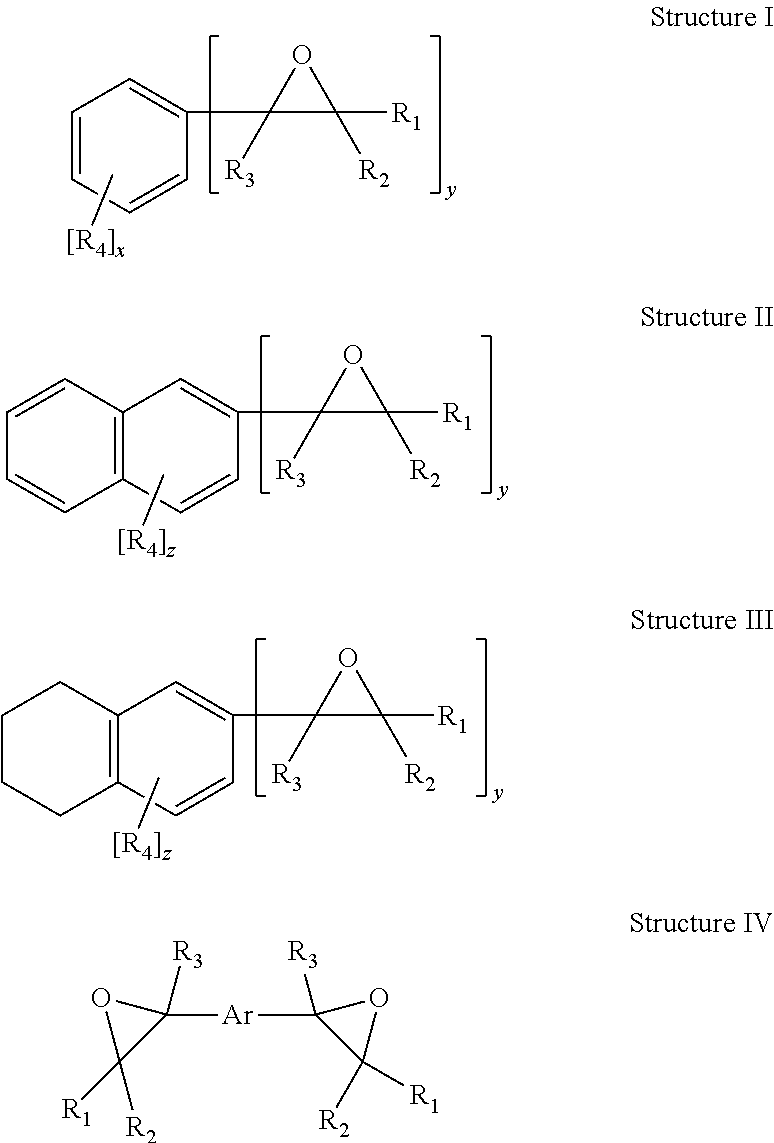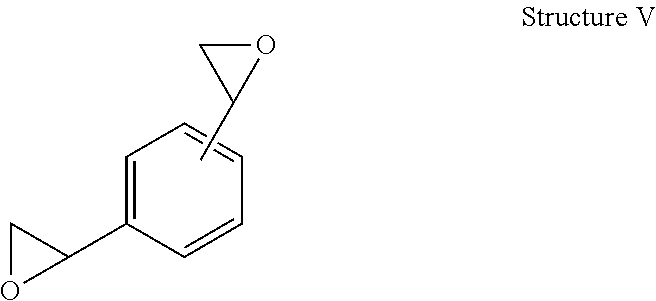Toughened epoxy resin formulations
a technology of epoxy resin and formulation, applied in the direction of epoxy resin coating, adhesives, nanotechnology, etc., can solve the problems of limited use of conventional cycloaliphatic resins with low to no chloride content, and achieve high tg values, high filler loading, and low to no extractable ionic contamination
- Summary
- Abstract
- Description
- Claims
- Application Information
AI Technical Summary
Benefits of technology
Problems solved by technology
Method used
Image
Examples
examples
[0070]The following examples and comparative examples further illustrate the present invention in detail but are not to be construed to limit the scope thereof.
[0071]Comparative Examples A and B and Examples 1 through 11 were carried out using the procedures as described below; and included the following raw materials: CTBN-Hypro 1300×31, a toughening agent; and Fortegra, a toughening agent commercially available from The Dow Chemical Company.
[0072]A master batch of CTBN-DVBDO adduct was prepared by reacting DVBDO (25.08 g, 6.587 mmol, 1 equiv), PPh3 (0.1 g, 0.381 mmol, 0.06 equiv) and CTBN (25.03 g, 154.633 mmol, 24 equiv) at 80° C. for 7 hr. The reaction was monitored by the disappearance of acid via titration with perchloric acid and tetraethylammonium bromide. The viscous orange liquid was used without further purification. The EEW of the adduct was determined to be 189. The resulting product was 50 wt % CTBN.
[0073]K1c values were obtained via compact tension testing. K1c values...
examples 1-3
[0074]DVBDO (1.05 equiv), and PACM (1 equiv) were added to a glass vial. Fortegra toughening agent was added at the desired loading (5 wt %, 10 wt %, or 15 wt % of the total mass of the blend). The vial was shaken for 30 minutes and then degassed for 15 minutes at 25° C. The blend was poured into a mold and cured at 85° C. for 1 hour and then at 175° C. for 1 hour. Compact tension specimens were cut from the resulting plaque and K1c values were obtained. Exact masses for each example are reported in Table I. Resulting K1c values are also reported in Table I.
examples 4-6
[0076]DVBDO, and Jeffamine D230 were added to a glass vial. DVBDO-CTBN adduct was added at the desired loading (5 wt %, 10 wt %, or 15 wt % CTBN of the total mass of the blend). The epoxy / Jeffamine D230 ratio=1.05, where the epoxy equivalents includes the DVBDO and that from the DVBDO-CTBN adduct. The vial was shaken for 30 minutes and then degassed for 15 minutes at 25° C. The blend was poured into a mold and cured at 85° C. for 1 hour and then at 175° C. for 1 hour. Compact tension specimens were cut from the resulting plaque and K1c values were obtained. Exact masses for each example are reported in Table II. The resulting K1c values are also reported in Table II.
PUM
| Property | Measurement | Unit |
|---|---|---|
| viscosity | aaaaa | aaaaa |
| viscosity | aaaaa | aaaaa |
| glass transition temperature | aaaaa | aaaaa |
Abstract
Description
Claims
Application Information
 Login to View More
Login to View More - R&D
- Intellectual Property
- Life Sciences
- Materials
- Tech Scout
- Unparalleled Data Quality
- Higher Quality Content
- 60% Fewer Hallucinations
Browse by: Latest US Patents, China's latest patents, Technical Efficacy Thesaurus, Application Domain, Technology Topic, Popular Technical Reports.
© 2025 PatSnap. All rights reserved.Legal|Privacy policy|Modern Slavery Act Transparency Statement|Sitemap|About US| Contact US: help@patsnap.com



